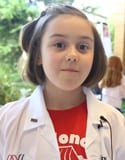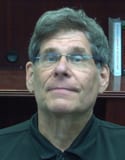
Ruby Taggart
8
How do people learn to read?
The science of how children learn to read has been studied in laboratories all around the world, in many languages and different writing systems. For children who are beginning to read, there are three main components.
The first component is that they know how to use a spoken language. A beginning reader already knows how to talk and comprehend a language like English, and that’s going to be helpful to them when they start reading.
The second thing they have to learn is about print. How do the symbols on the page work? In all the writing systems of the world, the symbols are ways to represent speech. A child learning to read English has to learn how the letters and combinations of letters correspond to the spoken language they already know.
The third component is knowledge of the world. In order to comprehend what you’re reading, you need to understand something about the topic. Some of that knowledge is gained through direct experience. For example, a child might go to the zoo and learn about animals. Other knowledge is learned just by reading about it, things you can’t actually see in person.
The more you read, the easier it becomes. That’s why once a child gets started reading, the amount and variety of what they read matters a lot.
From the science, researchers know a lot about how reading works, how children learn, the kinds of obstacles children encounter, and where teachers and classroom activities can make a difference.
Looking at what happens in classrooms in America and other English-speaking countries, you see a lot of the knowledge about the science of reading isn’t being used. That makes it harder for kids to learn to read. And, even when they do learn to read, the process has been difficult, so they may not like reading.
If there was a closer connection between the science and educational practices, more kids would succeed at reading, and more kids would like to read.
